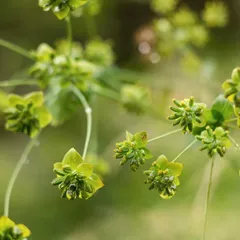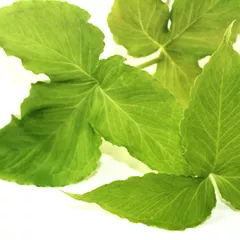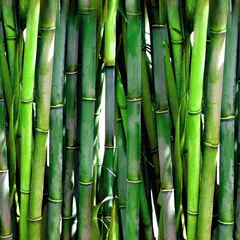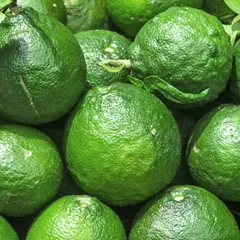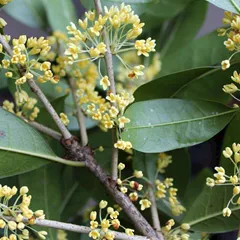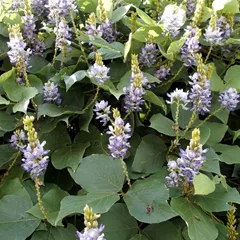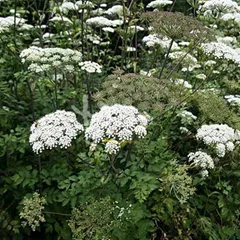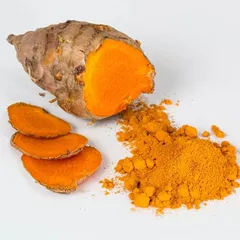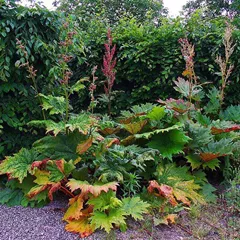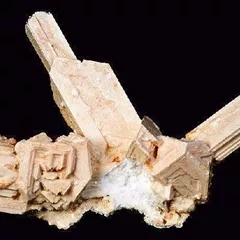Da Chai Hu Tang
Da Chai Hu Tang
Chinese: 大柴胡汤
Pinyin: Dà Chái Hú Tāng
Other names: Major Bupleurum Decoction
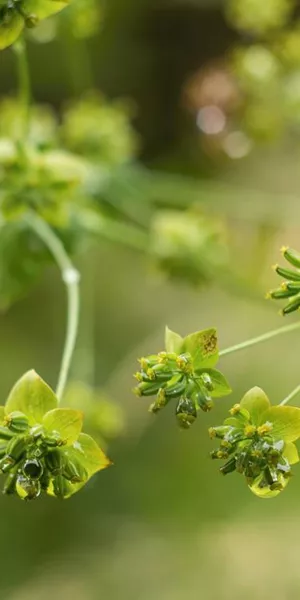
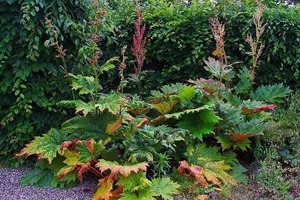
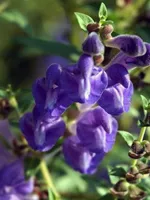
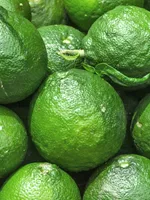




Da Chai Hu Tang
Da Chai Hu Tang
Chinese: 大柴胡汤
Pinyin: Dà Chái Hú Tāng
Other names: Major Bupleurum Decoction
Number of ingredients: 8 herbs
Formula category: Formulas that release the Exterior and purge the Interior
Mother formula: Xiao Chai Hu Tang
Conditions for which it may be prescribed: ObesityDiabetesPancreatis and nine other conditions
- Harmonizes and releases the Lesser Yang
- Drains internal clumping due to Heat
Source date: 220 AD
Source book: Discussion of Cold Damage
The information provided here is not a replacement for a doctor. You shouldn't use it for the purpose of self-diagnosing or self-medicating but rather so you can have a more informed discussion with a professional TCM practitioner.
Da Chai Hu Tang is a 8-ingredient Chinese Medicine formula with Bupleurum Roots (Chai Hu) and Rhubarb (Da Huang) as principal ingredients.
Invented in 220 AD, it belongs to the category of formulas that release the Exterior and purge the Interior. Its main actions are: 1) harmonizes and releases the Lesser Yang and 2) drains internal clumping due to Heat.
In Chinese Medicine health conditions are thought to arise due to "disharmonies" in the body as a system. These disharmonies are called "patterns" and the very purpose of herbal formulas is to fight them in order to restore the body's harmony.
In this case Da Chai Hu Tang is used by TCM practitioners to fight patterns like Liver Yang Rising. From a Western Medicine standpoint, such patterns can give rise to a range of conditions such as cholecystitis, cholelithiasis or pancreatis for instance.
On this page, after a detailed description of each of the eight ingredients in Da Chai Hu Tang, we review the patterns and conditions that Da Chai Hu Tang helps treat.
The eight ingredients in Da Chai Hu Tang
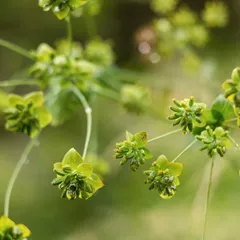
Chai Hu is a king ingredient in Da Chai Hu Tang. Like the name indicates, it means it has more power than other ingredients in the formula.
1. Bupleurum Roots (Chai Hu)
In general Chai Hu's main actions are as follows: "Harmonizes exterior and interior. Smoothes the Liver and upraises the Yang."
In the context of Da Chai Hu Tang, it is used because it dredges the Lesser Yang and releases the Exterior.
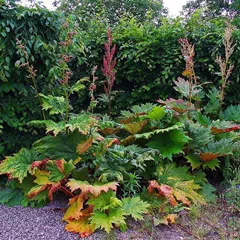
Da Huang is a king ingredient in Da Chai Hu Tang. Like the name indicates, it means it has more power than other ingredients in the formula.
2. Rhubarb (Da Huang)
Part used: Dried root and rhizome
Nature: Cold
Taste(s): Bitter
Meridian affinity: SpleenStomachLarge intestineLiverPericardium
Category: Purgative herbs that drain downward
In general Da Huang's main actions are as follows: "Drains Excess Heat and eliminates Dampness, especially when in the Bright Yang stage according to the Six Stages Theory. Cools the Blood and stops bleeding. Invigorates Blood, breaks up Stasis and relieves pain. Clears Heat and toxins from Excess. Applied topically for Hot sores and Blood Stasis."
In the context of Da Chai Hu Tang, it is used because it enters the Yang Brightness to remove Heat and open the bowels.
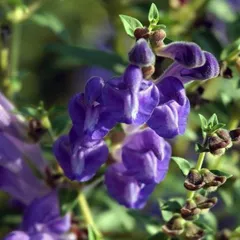
Huang Qin is a deputy ingredient in Da Chai Hu Tang. This means it helps the king ingredient(s) treat the main pattern or it serves to treat a coexisting pattern.
3. Baikal Skullcap Roots (Huang Qin)
Part used: Dried root
Nature: Cold
Taste(s): Bitter
Meridian affinity: GallbladderHeartLarge intestineLungSmall intestineSpleen
Category: Herbs that clear Heat and dry Dampness
Huang Qin bitter and cold. Together with the key herb Bupleurum root, it clears Heat from the Lesser Yang. It also assists the other key herb Rhubarb in draining Heat from the bowels.
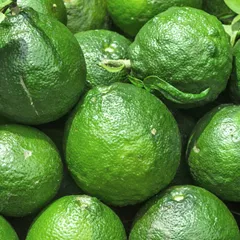
Zhi Shi is a deputy ingredient in Da Chai Hu Tang. This means it helps the king ingredient(s) treat the main pattern or it serves to treat a coexisting pattern.
4. Immature Bitter Oranges (Zhi Shi)
Part used: Dried unripe fruit
Nature: Cool
Meridian affinity: SpleenStomachLarge intestine
Category: Herbs that regulate Qi
Zhi Shi strongly invigorates Qi so as to remove Qi Stagnation. It helps to reduce focal distention and fullness in the chest and abdomen.
Together with the key herb Bupleurum, it strengthens Qi circulation. When combined with Rhubarb, it breaks up
clumping in the bowels.
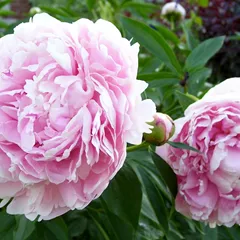
Bai Shao is an assistant ingredient in Da Chai Hu Tang. This means that it either serves to reinforces the effect of other ingredients or it moderates their toxicity.
5. White Peony Roots (Bai Shao)
Part used: Dried root
Nature: Neutral
Meridian affinity: LiverSpleen
Category: Tonic herbs for Blood Deficiency
Bai Shao relaxes urgency and stops pain. Together with Immature Bitter Orange and Rhubarb, it treats the abdominal pain from Excess.
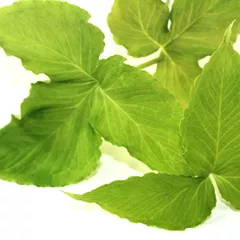
Ban Xia is an assistant ingredient in Da Chai Hu Tang. This means that it either serves to reinforces the effect of other ingredients or it moderates their toxicity.
6. Crow-Dipper Rhizomes (Ban Xia)
Part used: Dried rhizome and tuber
Nature: Warm
Taste(s): Pungent
Ban Xia harmonizes the Middle Burner and directs the Rebellious Stomach Qi
downward. Together with one of the envoys, Fresh ginger, it can stop vomiting effectively.
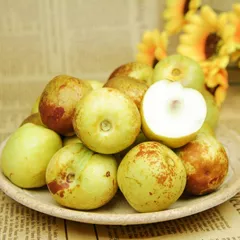
Da Zao is an envoy ingredient in Da Chai Hu Tang. This means that it directs the formula towards certain area of the body and/or harmonizes the actions of other ingredients.
7. Jujube Dates (Da Zao)
Part used: Dried ripe fruit
Nature: Warm
Taste(s): Sweet
Meridian affinity: SpleenStomach
Category: Tonic herbs for Qi Deficiency
Da Zao assists White peony root in softening the Liver and easing abdominal pain. Both herbs also protects the Yin from injury by pathogenic Heat and from the harsh draining character of Rhubarb and Immature bitter orange.

Sheng Jiang is an envoy ingredient in Da Chai Hu Tang. This means that it directs the formula towards certain area of the body and/or harmonizes the actions of other ingredients.
8. Fresh Ginger (Sheng Jiang)
Sheng Jiang , together with Jujube dates, gently invigorates the Nutritive and Defensive Qi. They also help to removing all the pathogenic influence.
Da Chai Hu Tang is used to treat Liver Yang Rising
It's important to remember that herbal formulas are meant to treat patterns, not "diseases" as understood in Western Medicine. According to Chinese Medicine patterns, which are disruptions to the body as a system, are the underlying root cause for diseases and conditions.
As such Da Chai Hu Tang is mostly used to treat the pattern "Liver Yang Rising" which we describe below.
But before we delve into Liver Yang Rising here is an overview of the Western conditions it is commonly associated with:
Cholecystitis Cholelithiasis Pancreatis Peptic ulcers Viral hepatitis Enteric fever Scarlet fever Diabetes Hypertension Hyperlipidemia Fatty Liver Obesity
Again it wouldn't be correct to say "Da Chai Hu Tang treats cholecystitis" for instance. Rather, Da Chai Hu Tang is used to treat Liver Yang Rising, which is sometimes the root cause behind cholecystitis.
Now let's look at Liver Yang Rising, a pattern that TCM practitioners commonly treat with Da Chai Hu Tang.
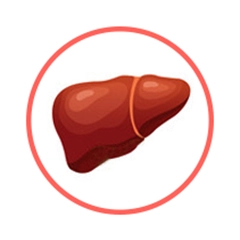
The Liver is a so-called "Zang" Organ. Learn more about the Liver in Chinese Medicine
Liver Yang Rising
Pulse type(s): Wiry (Xian)
Tongue color: Red
Symptoms: Tinnitus Deafness Insomnia Headaches Dizziness Dry mouth Dry throat Stiff neck Dry stools Irritability Blurred vision Stiff shoulder Feeling work-up Stiff upper back Outbursts of anger Soreness and weakness of the knees Stiffness in the neck shoulder and upper back
Da Chai Hu Tang is sometimes prescribed by TCM practitioners to treat Liver Yang Rising. This pattern leads to symptoms such as headaches, dizziness, tinnitus and deafness. Patients with Liver Yang Rising typically exhibit wiry (Xian) pulses as well as Pale, normal or slightly red on the sides with no coating.
Long term Deficiency of Liver Yin, Liver Blood or Kidney Yin can cause Liver Yang rising upwards. This pattern is also called "Arrogant Liver Yang". If left unchecked for many years, it can lead to Liver Wind Agitating Internally.
The symptoms mentioned here are fairly similar to these of Stagnant... read more about Liver Yang Rising
Formulas similar to Da Chai Hu Tang
Xiao Chai Hu Tang is 62% similar to Da Chai Hu Tang
Wen Dan Tang is 50% similar to Da Chai Hu Tang
Chai Hu Jia Long Gu Mu Li Tang is 50% similar to Da Chai Hu Tang
Chai Ge Jie Ji Tang is 45% similar to Da Chai Hu Tang
Pai Shi Tang is 40% similar to Da Chai Hu Tang
Huang Long Tang is 40% similar to Da Chai Hu Tang

